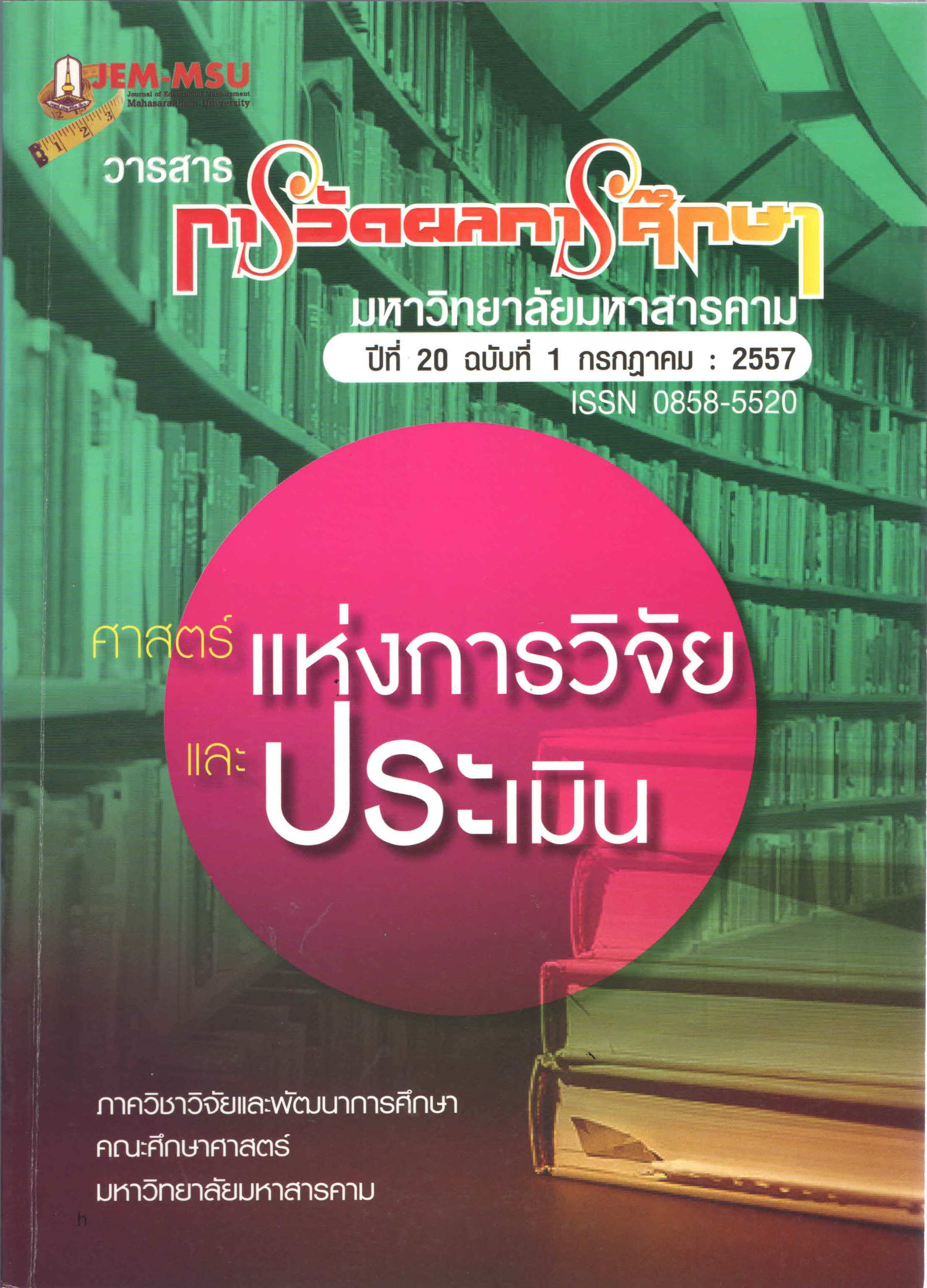Survey of Information and Assessment of Educational Management in Surat Thani during 2010 – 2011
Main Article Content
Abstract
The Office of the Education Council (OEC) has a responsibility in
conducting the country’s assessment at all levels and types of educational
institutes. The key measures employed for this purpose are the indicators and
database; therefore, in 2007–2008 the OEC made a study and developed a
framework for indicators to apply for the country’s educational assessment. The
indicators obtained are of 5 aspects: 1) general coverage and adequacy, 2)
coequality and fairness, 3) educational quality, 4) effectiveness, and 5) efficacy; all
in all, there are 42 main indicators and 49 minor ones. Accordingly, the survey of
information and assessment of education management in Surat Thani in 2010 -
2011 were carried out, collecting information from all levels covering every type of
educational organizations. Included in the study were: 546 basic education
schools, 12 vocational schools, 4 higher education institutes, 14 non-formal and
informal educational places, and 206 learning resources. OEC’s 5 survey forms
were used and thus data were collected and analyzed in line with the 17 indicator
frames covering all 4 aspects, that is, general coverage and adequacy, quality,
efficacy, and effectiveness. As regards the information survey and educational
assessment following the 17 indicator frames, it indicated that 10 out of 17
indicators were at the highest level, 1 was at the fairly level, and 6 were at the
improvement level. When the indicators were sorted out into 4 categories,
however, it indicated that, for coverage and adequacy, 5 out of 6 indicators were
at the highest, 1 at the improvement level; for quality, both under this category
were at the improvement level; for efficiency, 2 out of 6 indicators were at the
highest level, 1 at the fairly good level, and 3 at the improvement level; and for
effectiveness, all 3 indicators were at the highest level.
Article Details
The content and information contained in the published article in the Journal of Educational Measurement Mahasarakham University represent the opinions and responsibilities of the authors directly. The editorial board of the journal is not necessarily in agreement with or responsible for any of the content.
The articles, data, content, images, etc. that have been published in the Journal of Educational Measurement Mahasarakham University are copyrighted by the journal. If any individual or organization wishes to reproduce or perform any actions involving the entirety or any part of the content, they must obtain written permission from the Journal of Educational Measurement Mahasarakham University.


